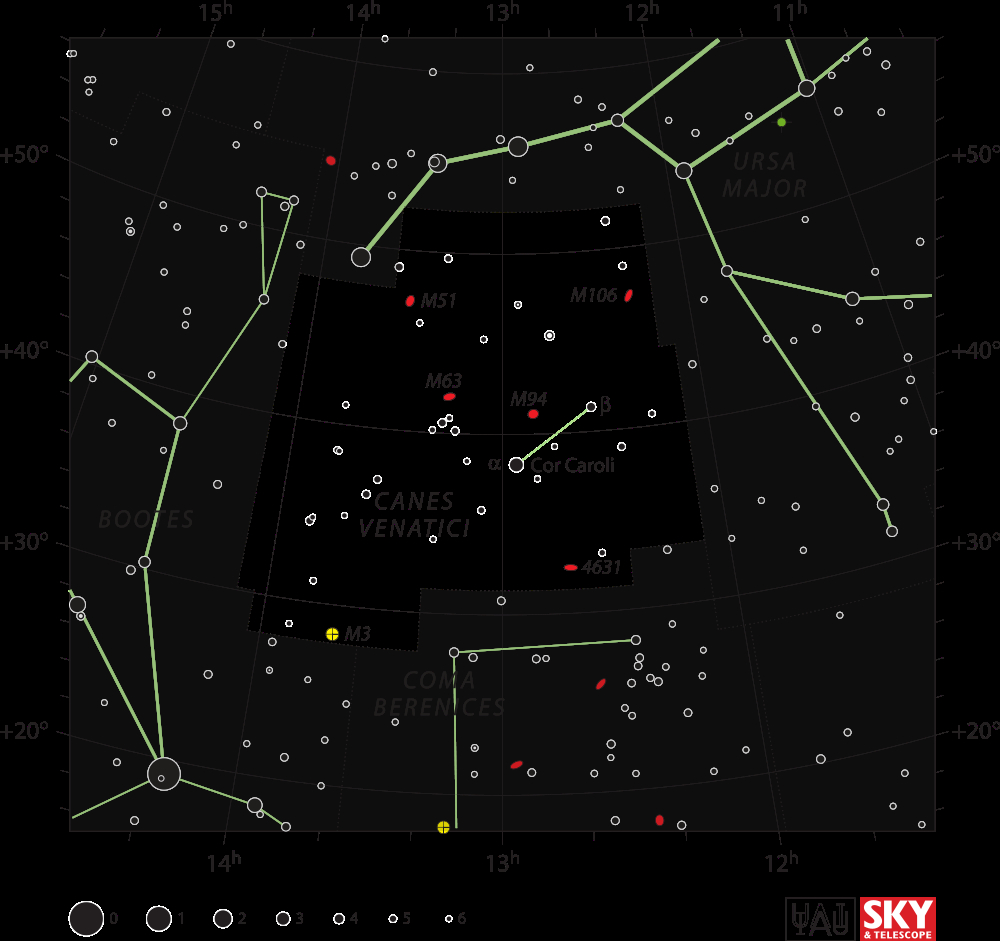
By IAU and Sky & Telescope magazine (Roger Sinnott & Rick Fienberg) [CC-BY-3.0], via Wikimedia Commons
"The Hunting Dogs"

By IAU and Sky & Telescope magazine (Roger Sinnott & Rick Fienberg) [CC-BY-3.0], via Wikimedia Commons
Abbreviation: CVn
Genitive: Canes Venaticorum
Constellation family: Ursa Major
Nearest constellations: Boötes, Coma Berenices, and
Ursa Major
Right ascension: 13.16h
Declination: 41.15°
Visible between latitudes: +90° and -40°
Square degrees: 465
Luminary: Cor Caroli (Alpha Canum Venaticorum)
Named stars: Cor Caroli, Chara, La Superba
Notable deep sky objects: M51 (NGC 5154, Whirlpool Galaxy), M63 (Sunflower Galaxy), M94, M106, NGC 4631, NGC 4656
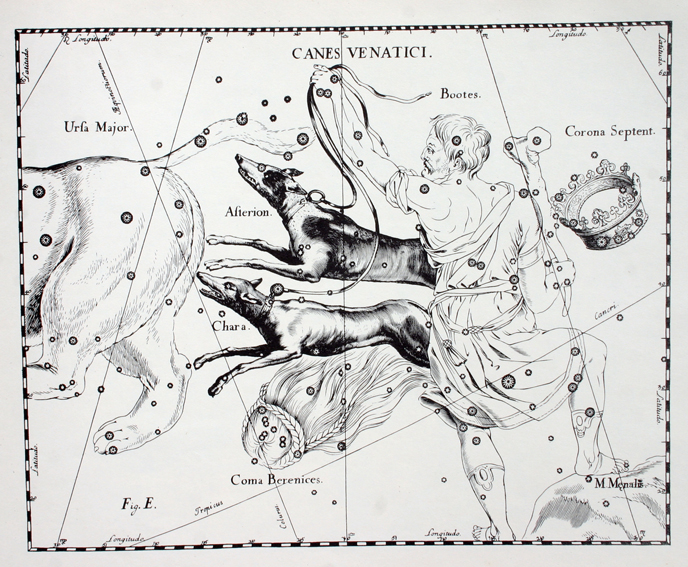
By Johannes Hevelius [Public domain], via Wikimedia Commons
Canes Venatici is a constellation in the Northern Hemisphere. It is visible in May.
A star in Canes Venatici, Y Canum Venaticorum, is one of the brightest and reddest carbon stars in the sky in addition to being one of the coldest visible stars. It was named "La Superba" by Angelo Secchi in the 1800s for its color.
The two dogs in Canes Venatici are sometimes presented as the hunting dogs of Boötes, named Asterion and Chara. They are unrelated to the dogs associated with Orion (Canis Major and Canis Minor).
M51 (Whirlpool Galaxy, NGC 5194 and NGC 5195):
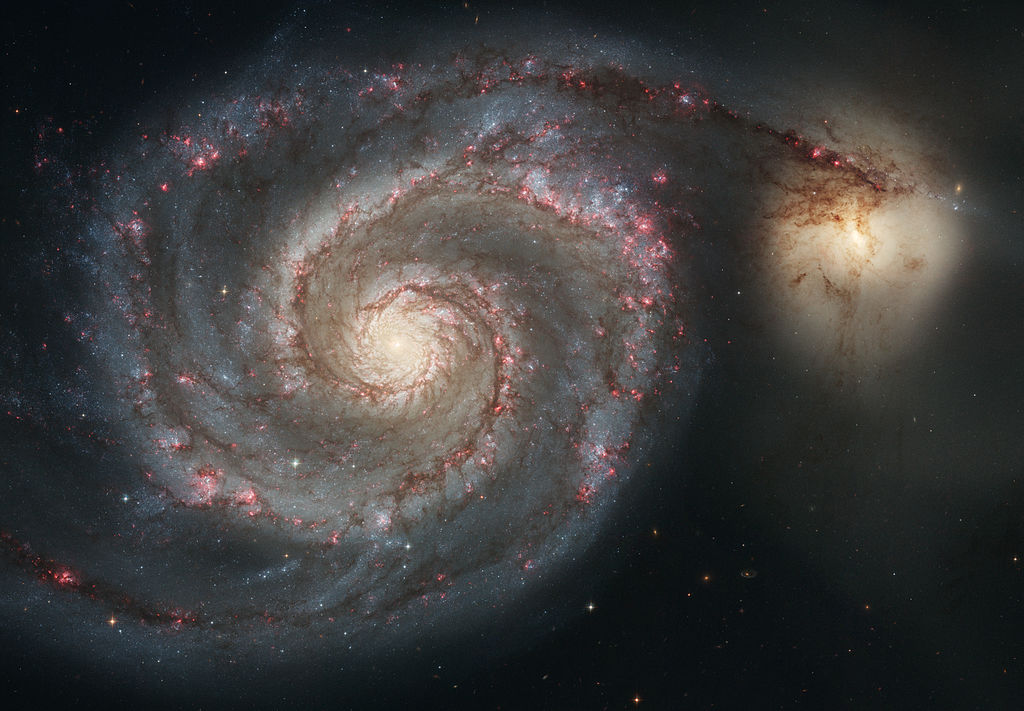
By NASA and ESA [Public domain], via Wikimedia Commons
M106 (NGC 4258), spiral galaxy:
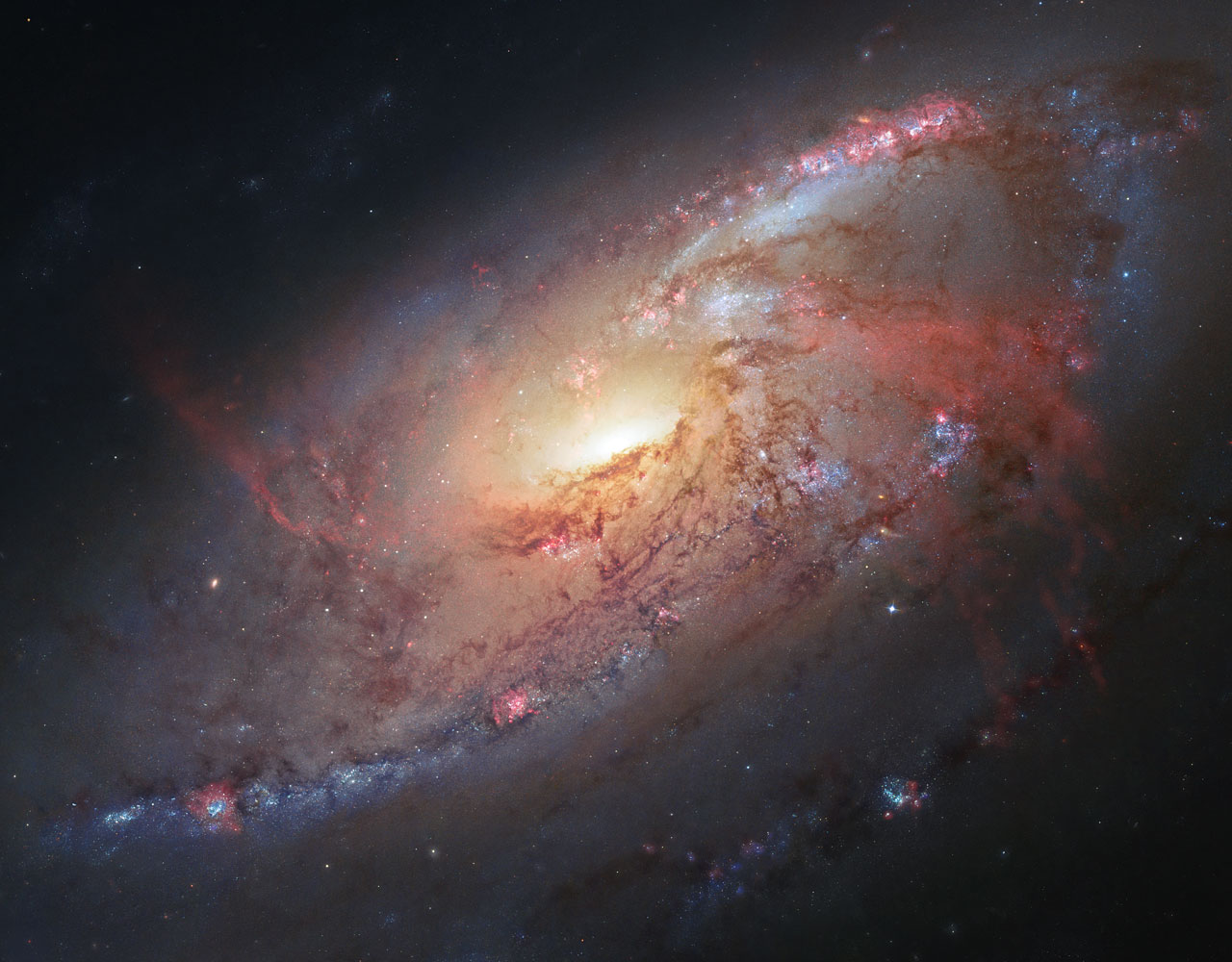
By NASA, ESA, the Hubble Heritage Team (STScI/AURA), and R. Gendler (for the Hubble Heritage Team), acknowledgement: J. GaBany [CC-BY-3.0], via ESA/Hubble
NGC 4485 (galaxy interacting with NGC 4490, which is out of frame):
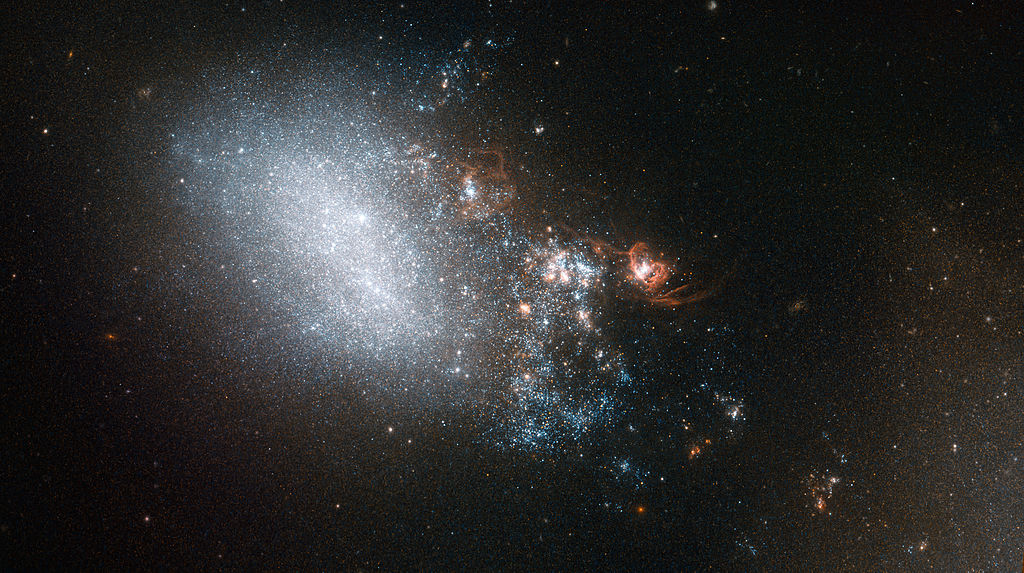
By ESA/Hubble & NASA, acknowledgement: Kathy van Pelt [CC-BY-3.0], via Wikimedia Commons
NGC 4627 and NGC 4631 (the Whale Galaxy), double galaxies:

By Adam Block/Mount Lemmon SkyCenter/University of Arizona [CC-BY-SA-3.0-us], via Wikimedia Commons
NGC 5033 (spiral galaxy):
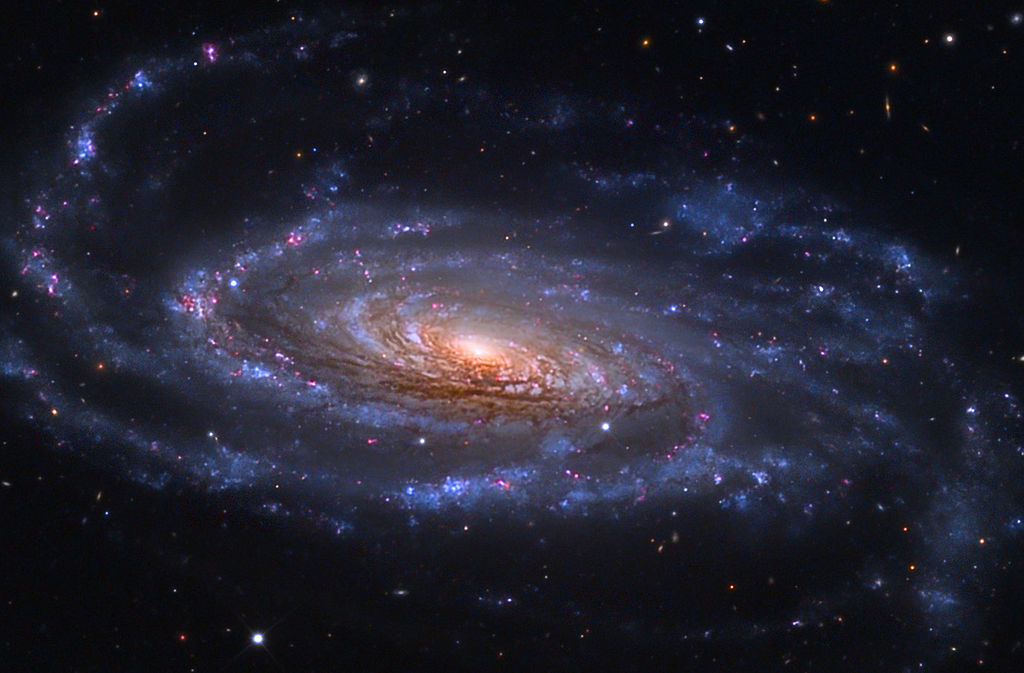
By Adam Block/Mount Lemmon SkyCenter/University of Arizona [CC-BY-SA-3.0-us], via Wikimedia Commons